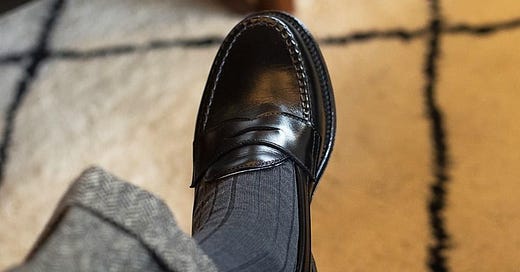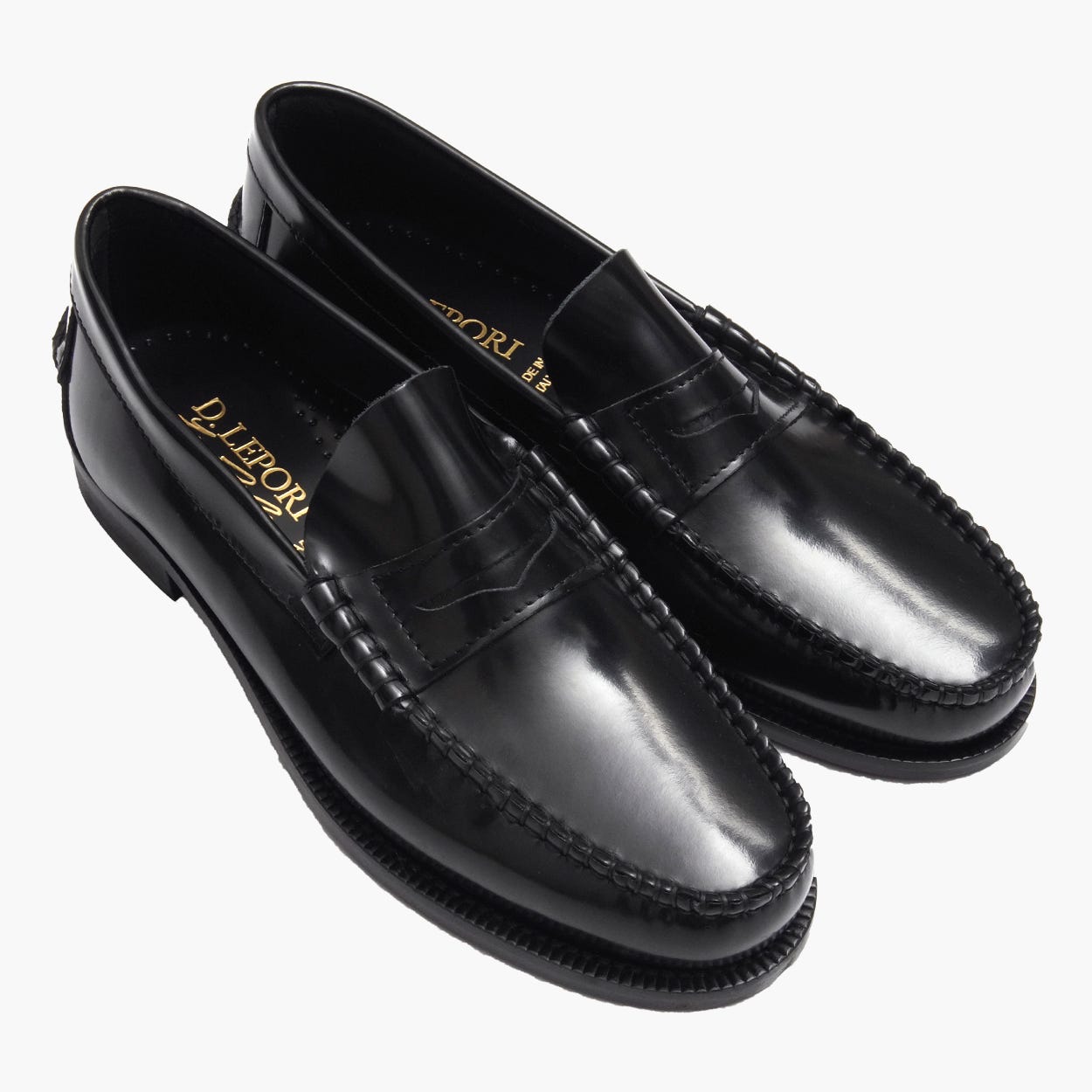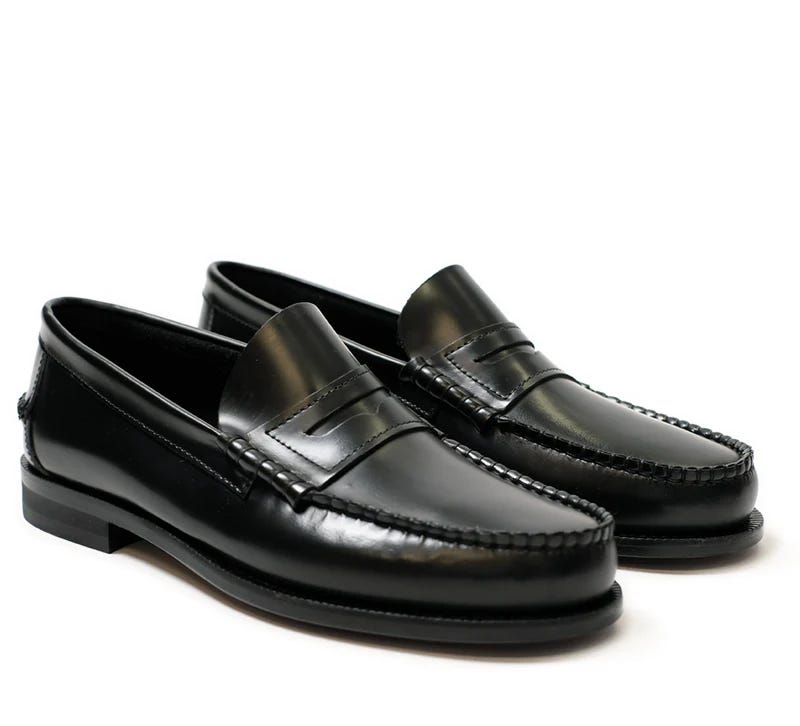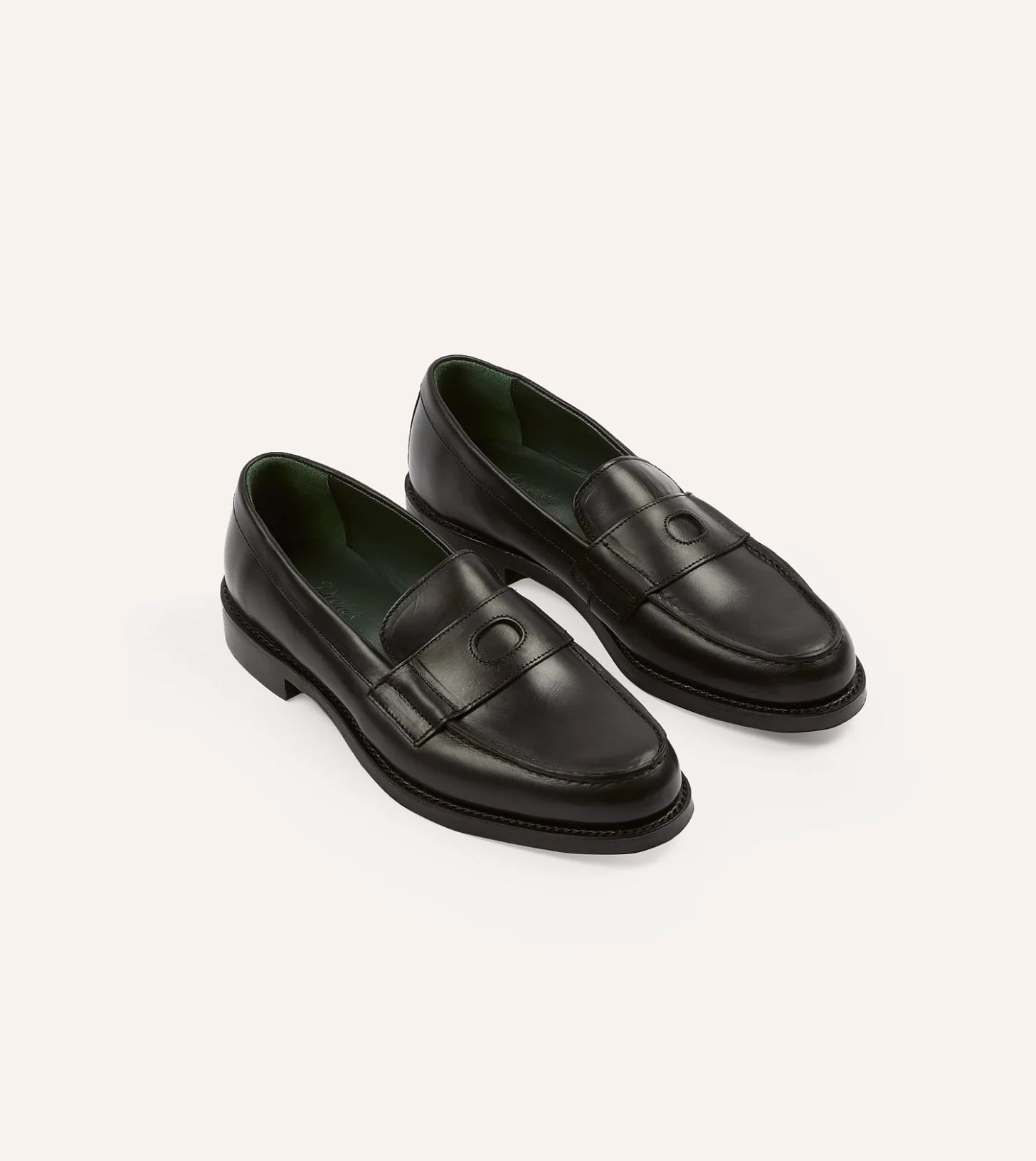Meeting #16: How to thrift better clothes pt. 2, plus, some options for beefroll loafers
How to get great vintage garments, and a list of loafers
Housekeeping
Thank you for joining us for this week’s issue of The Prep Club, before we go further I’d like to kindly ask that if you have a friend that ought to join us, please invite them. If you’ve not yet read last week’s club chair bulletin, it is available here, and our previous meeting, all about British Milsurp trousers, can be attended retroactively here (the pretence gets a little loose when going back to old articles, just roll with it).
I’m continuing my new two-topic approach for this meeting, I talked a little bit more in depth about that in the bulletin, any feedback as to how it reads would be great.
Buying the coolest dead people’s clothes
Very early into the club’s existence, I foregrounded my love of and reliance upon purchasing garments secondhand, in order to achieve the vision I have for my outfits on a student budget. Everything I say in my first article on this matter still stands, though I have, to a certain extent, outgrown the charity shops local to me, and more often than not I am instead looking online, being particularly reliant upon Vinted. What follows then is a series of thrifting tips for the twenty-first century, if you will. That is to say, here’s my advice on how to buy neat shit on the cheap, on the internet.
Don’t be afraid of the trawl
When embarking on a search, one may be inclined to begin with a nice and specific set of search parameters, I might suggest the contrary. I’m rather partial to what I might refer to as THE TRAWL. I like to put on a record, maybe light some incense, and set the most general parameters possible. I’m not looking for efficiency here, I’m looking for bargains, and bargains don’t tend to be listed with great specificity, rather you'll be coming across a Brooks sack listed simply as “blazer”. This a process, one that you need to find enjoyable, I tend to take it as an alternative to a good old fashioned doom scroll, slightly less existential dread, but slightly worse for the wallet.
A typical search, when doing this, would be pick something very, very general, “shirt”, “jacket”, and then filter a couple bits out, size, colour, brand. Or be a touch more specific, but then don’t filter by brand, include the brand in the search or something like “Oxford shirt”, I’m aware that’s still comically general.
There’s a lot of chaff from which one must separate the wheat, I will admit, but that’s kind of part of the fun I find, I’d liken it to the thrill of the hunt in thrift shops. It goes back to the underlying notion of our first meeting on this matter, acquiring clothes is a part of a hobby, and the process of searching ought to be as enjoyable as the actual purchase, one should enjoy the engagement with the process over the material goods.
In a similar vein, making use of “other” in size filtering, there’s listings hiding there as a result of missing labels, or labled sizes which don’t align with the filter options on the platform, Depop for example only allows for S, M, L sizing for their outerwear, quite often you can find jackets with proper sizing under “other”.
“Similar items” is a secret weapon
Most services of this kind provide a “similar items” section, I cannot overstate how useful this is, if you find a nice example within the trawl, or through your recommended items, but the price isn’t quite right, time to head to similar items. These sections have their limitations, they tend to be very biased towards brand, that’s just a limitation of the code, though I’d be interested to see some AI integration to remedy that. Regardless, it’s a very valuable tool to utilise.
Looking for loopholes
This is applicable to in person shopping too, by loopholes I mean a couple details, diffusion brands, and sizing loopholes. For example, Ralph Lauren’s children's sizing has, at points in their existence, run up to a size 20, which is a 29” waist/ comparable to a 36s in a jacket, some folks can get away with those. Likewise unisex items often disappear within the gendered sizing systems which most of these services use.
Know the platforms
Getting to know what you like to buy on what platforms takes a little time, but knowing where to look before you start is a big timesaver. As a primer, Vinted and Grailed tend to be more individuals, prices tend to be more reasonable or entirely unreasonable, Vinted is good for staples and trawling particularly, Depop and Etsy tend to be more career sellers, they ship quick which is nice, and selections are more curated, but will be more expensive, I wouldn't look to them for basics, but specific pieces definitely. EBay is an odd mix of both.
There’s also a slew of other second-hand platforms about, GEM is good for searching across platforms, and the club had its store directory on the home page.
Butcher’s cut footwear
The loafer is the ivy shoe, we’ve previously established this, but very specifically it is the beef-roll loafer, the construction style seen on the Weejun. The addition of the beef-roll to the moc toe is an iconic feature which extends out into alternative looks, with its presence on the ever-popular DM Adrian. It’s also perhaps the most dramatic alteration to the silhouette of a loafer that can be made, I’d posit even more so than changing between tassel and penny. Though I don’t really think you need multiple pairs of loafers, I’d certainly opt for a beef-roll and an apron-front as a key point of difference.
As such, here’s some beef-roll loafers that you might like to wear.
Vintage Weejuns/Sebagos
Modern examples of Weejuns leave a lot to be desired, Sebagos are better, but they are both outclassed by vintage examples of the same shoes. I’d look to pick up a pair, on one distinct condition, you know a cobbler with a Blake stitch machine. Your best bet is probably picking up a fairly battered pair on the cheap, and getting some new soles on them, for the best chance of waterproofness. As an aside, almost all beef-roll loafers are Blake stitched, for the slimmer appearance, ultimately that just makes them a summer shoe, I do have one pair of Goodyear welts to show you in a bit.
If you can get these resoled, and are aware of the increased expense in doing so for Blake stitched shoes, these are a nice choice.
D. Leopori College Man
Sold by John Simons in the UK, these present in the absolute classic college silhouette, as the examples above. Their construction is not listed online, though visual inspection suggests that they would be Blake stitched again. These are priced in line with modern G.H. Bass and Sebagos, and offer a nice alternative.
Horatio Hanover
Another one following the classic silhouette, one can see that this is particularly a style of shoe that sees more replication than interpretation. Horatio are a very new manufacturer, without a huge amount of reportage untoward their quality, but with the opening of their first brick-and-mortar store here in the UK I am hoping to get hands on with some examples in the near future.
Alden 981
The first variation in silhouette, and also the first Goodyear welt, but it will cost you significantly more for both of those features. Alden don’t need introduction from me, but they do provide an excellent example of a welted beef-roll loafer
Honourable Mention: Drakes Charles
Not technically a beef-roll, but does feature a raised lake which provides a similar effect. They also present a gorgeous modern interpretation of the shoe, with the addition of a welted sole.
Thanks for joining us today, see you next week.









